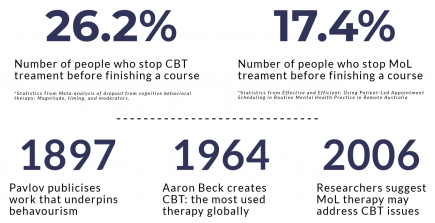Psychological researchers completed a study that illustrates the fundamentals of perceptual control theory (PCT): a theory that they see as the answer to psychology’s replication crisis and attendance issues in therapy.
Dr Warren Mansell and his team at the University of Manchester say that over 100 years of behaviourist theory that underpins psychological discourse and therapies may have fundamentally misunderstood human behaviour.
Their work and PCT suggests that behaviour is not the result of humans being conditioned but instead likens behavioural processes to homeostasis: the means by which the body regulates its internal heat.
When the body is too hot or too cold, biological mechanisms work to get the body back to its ideal temperature. In PCT, the suggestion is that behaviour works in the same way: human behaviour is an automatic adjustment to changes in the environment that take us away from our desired state; it’s an innate and automatic control mechanism.
This is a very different standpoint to the behaviourist underpinnings of psychology that suggest that behaviour is a set of learned rules and responses that are built up over the lifespan. This theory is also fundamental to why many talking therapies are expected to work and this includes the most widely used therapy cognitive behavioural therapy (CBT).
The behaviourist standpoint has its beginnings in the work of Ivan Pavlov in 1897. Using dogs, Pavlov suggested that behaviour was a pattern of learned responses. If you teach a dog that a bell means food is on its way, they will start salivating.
Expanding this premise to human behaviour, psychology has therefore been working on a premise that behaviour can be predicted for over a century. It also suggests that people can be conditioned to behave a certain way. PCT suggests this is not the case.
Dr Mansell said: “When you see a person behaving a certain way, this is a dynamic combination of what they want to control and what’s happening in the environment that’s helping or hindering that.
“This flies in the face of the idea from both behavioural and cognitive psychology that we respond to a stimulus; that we plan or learn; that we can be specific how to respond.”
PCT was first suggested in the 1950s by William T. Powers, an engineer and physicist turned psychologist. It has since struggled to gain traction in the field. Dr Mansell believes this is due to an unwillingness to challenge a century of accepted wisdom and the entire careers of many big-name academics.
Dr Mansell said: “It’s challenging because PCT not only questions psychology’s history but also other people. I’m going to say you’ve all got it wrong. The discipline is already vulnerable enough never mind taking away all the terminologies and methodologies we’ve been using for decades.”
The latest experiment seeks to rectify this by making PCT theory clearer. In the experiment, two participants are sat at computer terminals. One participant (the actor) is attempting to keep a small dot in a red circle. The second participant (the observer) sees the result of this action on another screen: the word “hello” is scrawled out.
Only a few observers managed to correctly state that the actor was doing something other than writing hello. Of the 164 pairs that took part in the experiment, the vast majority of observers say
that the actor was simply trying to say hello. Of course the actor had no idea this was happening and was trying to keep the dot in the circle.
“Observers don’t think behaviour is due to what input another individual is trying to control,” said Dr Mansell explaining the implications this has for how we think about behaviour.
For therapies, Dr Mansell and other PCT advocates believe that they should be entirely focused on giving clients control rather than behaviour modification. Advocates of the PCT based method of levels therapy (MoL) put this goal at the heart of their work from the moment a client agrees to come to therapy.
Dr Mansell said: “It’s a well-known finding that loss or a lack of control exemplify mental health problems so the first thing we should be thinking about is how to give people control, not change their thinking or behaviour. That will follow.
“People decide when they want to come to therapy, ideally where, how long they want the sessions to be, how many because surely if they get that level of control they’re going to feel better. How many people would go to the cinema if the only way you could go is if you got an appointment letter?”

In studies conducted by Dr Mansell and corroborated by the work of Australian psychologist Dr Tim Carey, MoL saw an increase in attendance rates to therapy, reduced waiting times, as well as engaging people in therapy who previously proved resistant to other more common therapies such as CBT.
Dr Mansell is aware that more work needs to be done to make PCT a more commonly discussed idea in the field. He suggests that the fluidity and client focus of MoL makes it difficult to conduct randomised control trials and form a manual for practitioners to follow.
“It takes a leap of faith. Understandably a lot of people aren’t ready or willing to take that leap,” said Dr Mansell who hopes PCT and MoL will go some way towards resolving some crucial issues in the psychological field.



